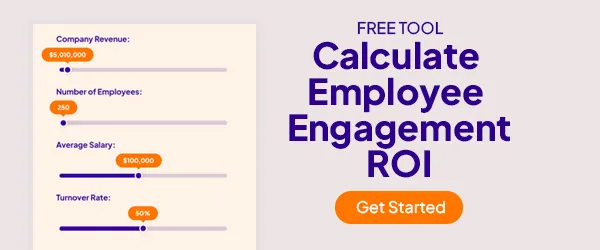Building a business case for work-life balance and employee support programs

A Reuters study found that work-life balance ranks as highly as pay on 93% of workers' list of priorities. With 72% of the U.S. workforce believing a healthy work-life balance is crucial to their well-being, organizations are beginning to recognize the importance of work-life balance and employee support programs in maintaining a productive, innovative, and engaged workforce. In the past, better business outcomes were achieved by pushing employees to higher performance levels. But research and success stories from leading organizations and Circles clients have shown that prioritizing employee well-being can improve performance and significantly contribute to higher revenue, increased innovation, and a strengthened talent pool.
In this blog, we will explore the critical connection of work-life balance services to the employee experience, employee and employer benefits, and how to calculate ROI on these employee engagement programs. We’ll show specific examples of how implementing these programs can lead to a positive return on investment (ROI) and contribute to favorable business outcomes.
The employee experience and work-life balance
The employee experience encompasses all interactions that employees have with their employer, from the initial job application to their exit from the organization. Work-life balance services play a crucial role in shaping this experience as they directly impact employees' well-being, productivity, and overall satisfaction with their work environment. By offering programs that support work-life balance, such as flexible work hours, telecommuting options, and wellness initiatives, organizations demonstrate their commitment to promoting a healthy and sustainable work culture, thus enhancing the overall employee experience.
Work-life balance programs improve workplace culture
Employees benefit from work-life balance programs through reduced stress, improved mental health, increased job satisfaction, and greater flexibility to manage their personal commitments and daily life tasks. These benefits lead to higher employee retention rates, improved morale, and a greater sense of loyalty towards the organization.
Prioritizing work-life balance improves business outcomes
But these types of benefits and programs don’t just enhance employee engagement, they improve business outcomes — higher productivity, lower absenteeism, and a more positive employer brand. And those results are tangible: according to Gallup, engaged employees show up to work and do more work — highly engaged business units see an 81% difference in absenteeism, a 14% difference in productivity and a 43% difference in turnover.
ROI and positive business outcomes
Implementing work-life balance programs is an investment that organizations make in their workforce, and like any investment, it needs to show a positive return. One way to measure your return on employee engagement initiatives is through ROI calculation, which can demonstrate the tangible benefits of these programs. Not sure how to calculate your ROI? Here’s a tool to help you get started. Simply slide the levers to your annual company revenue, number of employees, average employee salary and your annual turnover rate. Click the “calculate ROI” button, and you can see how the monetary impact of increased productivity, reduced turnover costs, and improved overall performance. Using an ROI calculator can quantify the cost savings and revenue enhancements that result from these programs, making a compelling case for their implementation.

Success stories and examples
Several organizations have successfully demonstrated the impact of prioritizing work-life balance and employee support programs. For example, large organizations like Google and Salesforce have implemented comprehensive work-life balance initiatives, resulting in improved employee satisfaction, greater workforce diversity, and higher levels of innovation. These organizations have seen tangible business outcomes, including increased revenue, a better talent pool, and a strong employer brand, all of which contribute to their success in the marketplace.
But organizations of all sizes benefit from work-life balance programs. Here are three examples of success stories from Circles:
- Biogen reduces turnover 64% by adding work-life balance services to benefits program
- Work-life balance program is evidence of strong employer brand for top law firm
- Global company enhances employee experience by offering work-life services to staff at U.S. headquarters
Striking the right balance
Striking the right balance between providing a positive employee experience and deriving value from work-life balance programs is crucial for sustainable success. To achieve this, organizations need to align their programs with the needs and preferences of their workforce, leveraging data and feedback to continually optimize their offerings. By fostering an environment where employees feel supported and valued, organizations can create a thriving culture that drives meaningful business results.

